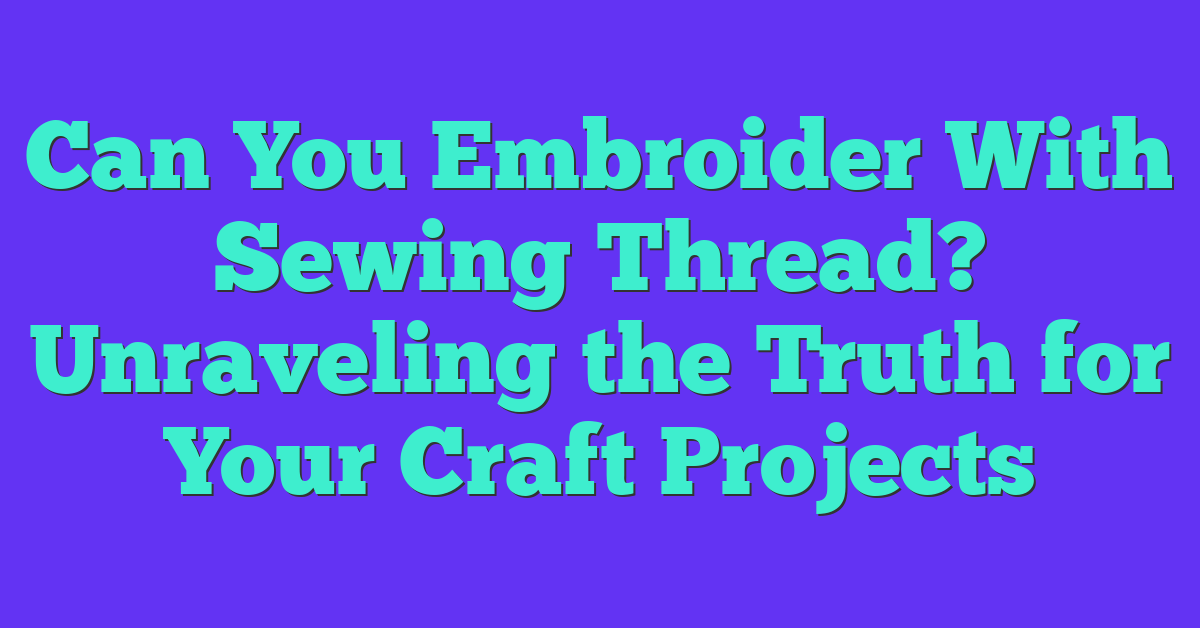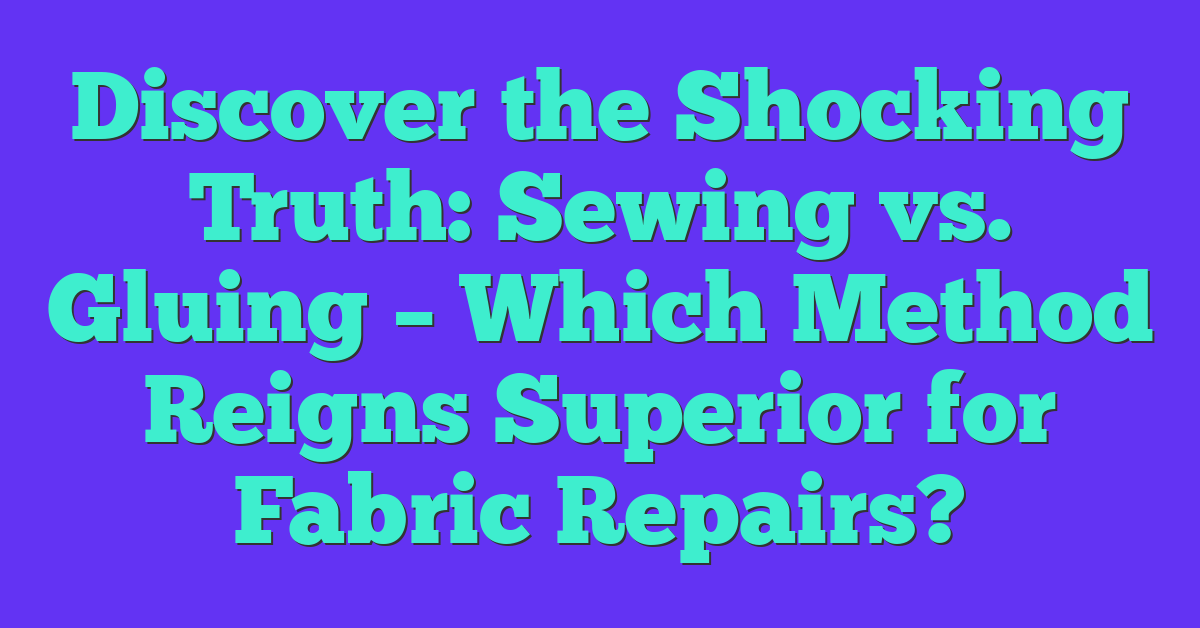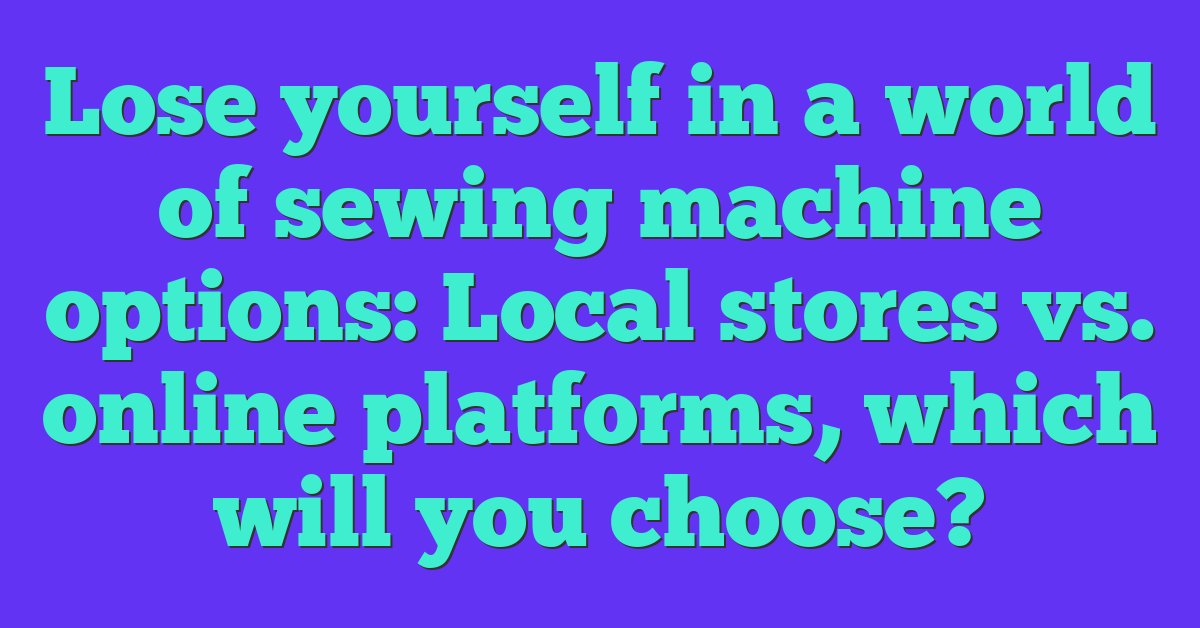Embroidery, it’s an art form that’s been around for centuries, and you’ve decided to give it a whirl. As you begin your new journey, one question may pop up in your mind: can you embroider with sewing thread? After all, they’re both threads, right?
Guess what? You certainly can! However, there are some things to consider before jumping headfirst into your embroidery project using sewing thread.
While the world of threads might seem daunting at first glance, don’t worry! By the time we’re done here, you’ll be threading those needles like a pro!
Understanding Embroidery and Sewing Threads
Diving right into it, let’s first clarify the difference between embroidery thread and sewing thread. You’ve probably noticed that they’re not quite alike. Embroidery thread is sheen, soft, and comes in a rainbow of colors. It’s designed to stand out on fabric, making your designs pop. On the other hand, sewing threads tend to be stronger and more durable as their primary job is holding pieces of fabric together.
When you start comparing these two types of threads closely, you’ll find that embroidery threads are usually made from rayon or polyester while sewing threads can be cotton, polyester or even a blend of both. The materials used in an embroidery thread makes them shiny and vibrant but less durable compared to the subdued yet strong sewing thread.
You might wonder what happens when you switch up the roles? Can you embroider with a sewing thread? Well, technically speaking, yes – you can! But here’s the catch: The result may not be as vibrant or colorful as if you’d used traditional embroidery threads.
-
Sewing Thread for Embroidery Pros:
- More sturdy
- Easily available
-
Cons:
- Not as vibrant
- Lacks sheen
It’s crucial to remember that though some crafters have found success using sewing thread for embroidery (especially when durability is needed), it might not work for everyone or every project.
So before diving into your next project with just any old spool of thread from your stash – take a moment to consider what kind of effect you’re going for. Do you want bright colors and high shine? Or are strength and longevity higher on your priority list?
Remember this isn’t about right or wrong – it’s about creating something beautiful that brings joy – whether it lasts for one season or many years! Happy crafting!
Can You Embroider with Sewing Thread: Breakdown
Ever wondered if that sewing thread sitting in your drawer can double up for your embroidery projects? Well, it’s time to get those questions answered.
Yes, you can embroider with sewing thread! But before you start threading that needle, there are a few things you ought to know. Sewing threads and embroidery threads aren’t exactly identical twins. They’re more like distant cousins – similar but distinct.
Sewing threads are generally thinner compared to the traditional embroidery ones. If you’re going for a delicate design or fine details, then this is your go-to choice! But keep in mind that because of its thinness, it won’t give as bold a look as embroidery thread would.
Now let’s talk durability. Sewing threads are sturdy fellows designed to hold pieces of fabric together securely. That’s their day job! So when they’re asked to step into the limelight and add aesthetic value instead, they might not stand up as well as their showier cousin – the embroidery thread.
Here’s a quick comparison:

| Sewing Thread | Embroidery Thread | |
|---|---|---|
| Thickness | Thinner | Thicker |
| Durability | High (for holding fabrics) | High (for surface work) |
But hey, don’t let these facts discourage you from experimenting! Use different types of sewing threads – cotton, polyester or even silk – and see how they transform your designs.
So basically:
- Yes, you CAN use sewing thread for embroidery.
- It may not be AS BOLD or durable on the surface compared to dedicated embroidery threads.
- EXPERIMENTATION is key – play around with different types and thicknesses until you find what works best for your project!
Remember it’s all about letting creativity flow and making something beautiful out of whatever materials we have at hand. So go ahead, why not give sewing threads a shot at your next embroidery project? After all, versatility is the spice of craft life!
Pros and Cons of Using Sewing Thread for Embroidery
Embarking on an embroidery project, you might wonder if it’s possible to use your existing sewing thread stash. Well, the answer isn’t exactly black and white. Let’s delve into the pros and cons of using sewing thread for embroidery.
On one hand, you’ll find that sewing threads are considerably cheaper than their embroidery counterparts. Plus, they’re readily available in a wide array of colors. You’re likely to have them lying around already if you’ve dabbled with any form of stitching before. This versatility often makes them appealing to beginners who don’t want to splurge on specialized threads right out the gate.
« Discover the Optimal Length for Sewing Pins! Unlock Professional Results in Your Sewing Projects
Replace Sewing Machine Motor: Your Quick and Easy Guide »
However, it’s not all sunshine and roses when using sewing thread for embroidery. They tend to be thinner than embroidery threads which may cause your stitches to appear less vibrant or full-bodied. The quality difference can be starkly noticeable especially when compared side by side with traditional embroidery thread work.
Another downside is durability. Sewing threads might not stand up as well against constant handling or washing because they’re typically not as strong as embroidery threads.
Lastly, there’s a chance that these regular sewing threads might fray or break during the stitching process due its thinness which could leave you grappling with frequent interruptions.
Here’s a quick rundown:
Pros
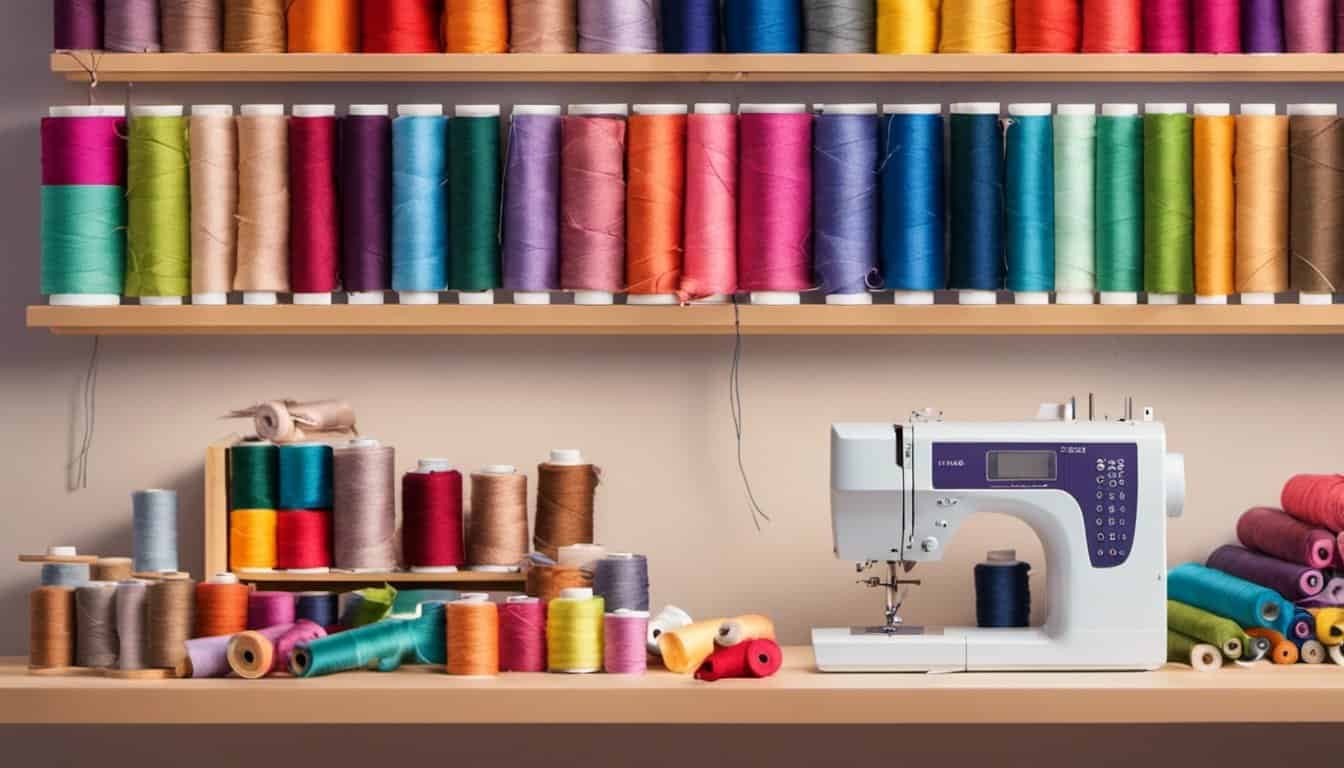
- Cheaper
- More accessible
- Available in many colors
Cons
- Thinner resulting in less vibrant stitches
- Less durable
- May fray or break during stitching
To sum it up, while it’s certainly feasible to use sewing thread for embroidering purposes, some trade-offs come along with this choice – namely vibrancy and durability issues. It ultimately boils down to what aspects matter more in your specific project: cost-effectiveness or optimum quality?
Expert Opinions: Sewing Thread in Embroidery Projects
So, you’ve got a stash of sewing threads and you’re wondering if they can double as embroidery floss. Let’s see what the experts say!
First off, it’s important to understand that sewing thread and embroidery thread are indeed different. They’re made for separate purposes – sewing thread is designed to blend seamlessly with your fabric, while embroidery thread is meant to stand out and create bold, beautiful designs.
But does that mean you can’t use one for the other? Well, not exactly! While most professionals would recommend using specialized embroidery floss for your projects due to its sheen and volume, some say that using sewing thread isn’t entirely off-limits.
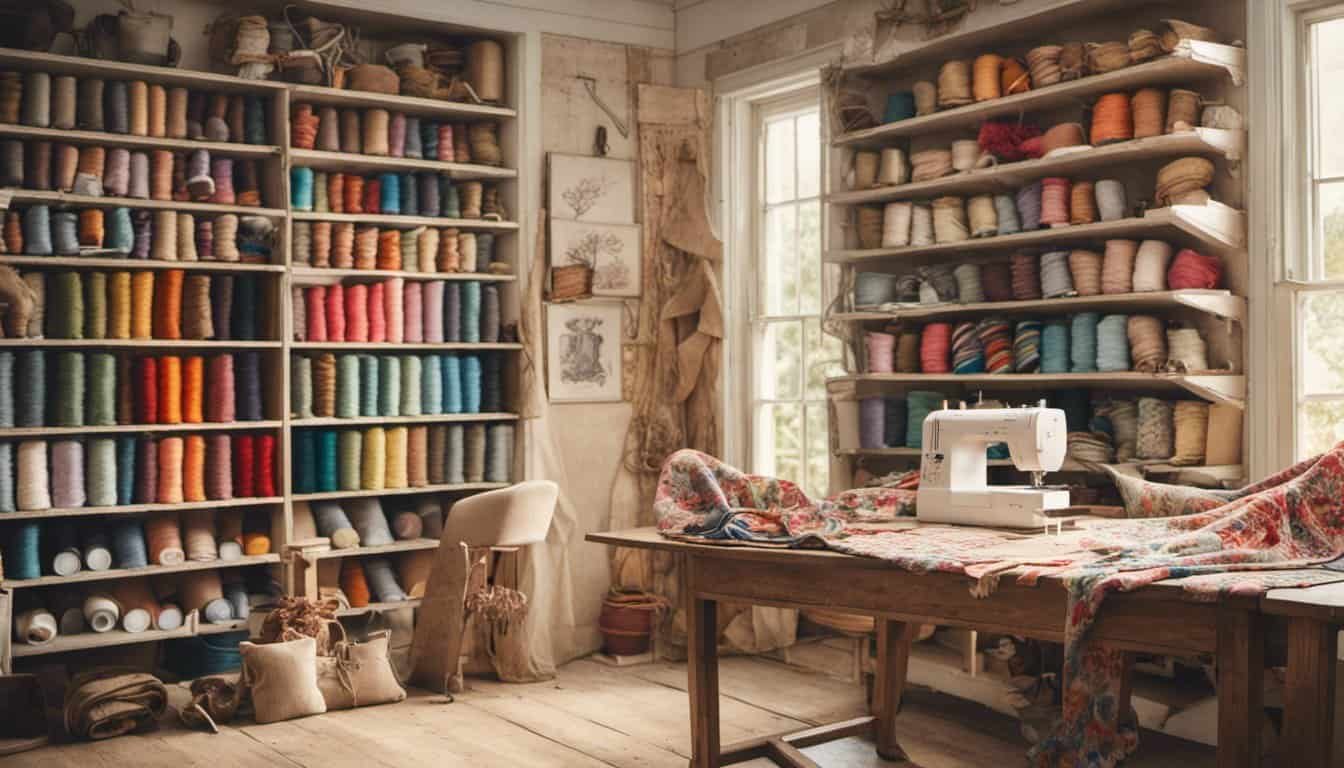
In fact, there are instances where using a thinner sewing thread could work to your advantage. For delicate or intricate designs where a fine line is needed, or when working on dense fabric where too much bulk would be problematic, opting for a regular sewing thread might just do the trick!
Here are some points from leading industry pros on why you might choose to stitch with regular threads:
- Versatility: If you’re an avid sewer with tons of colors in your collection already, it could save time (and money) not having to buy additional threads.
- Subtlety: Sewing threads offer less shine than their glossy counterparts which provides a more subdued aesthetic.
- Fine Detail: Thinner threads allow greater precision which works great for detailed areas or small lettering.
All being said though – it’s really up to personal preference! What matters most is how comfortable YOU feel about the end result. So go ahead – experiment away!
Differences between Embroidery Thread and Sewing Thread
Diving headfirst into the world of crafting, you’ll soon realize that not all threads are created equal. Let’s untangle the differences between embroidery thread and sewing thread.
Embroidery thread is your go-to when you’re looking to add a splash of color and texture to your projects. It’s thicker, shinier, and typically made from rayon or polyester. The goal? To make your designs pop! While it’s mainly used for decorative purposes on fabrics like cotton, silk, or satin, don’t be fooled – this type of thread can be pretty sturdy too.
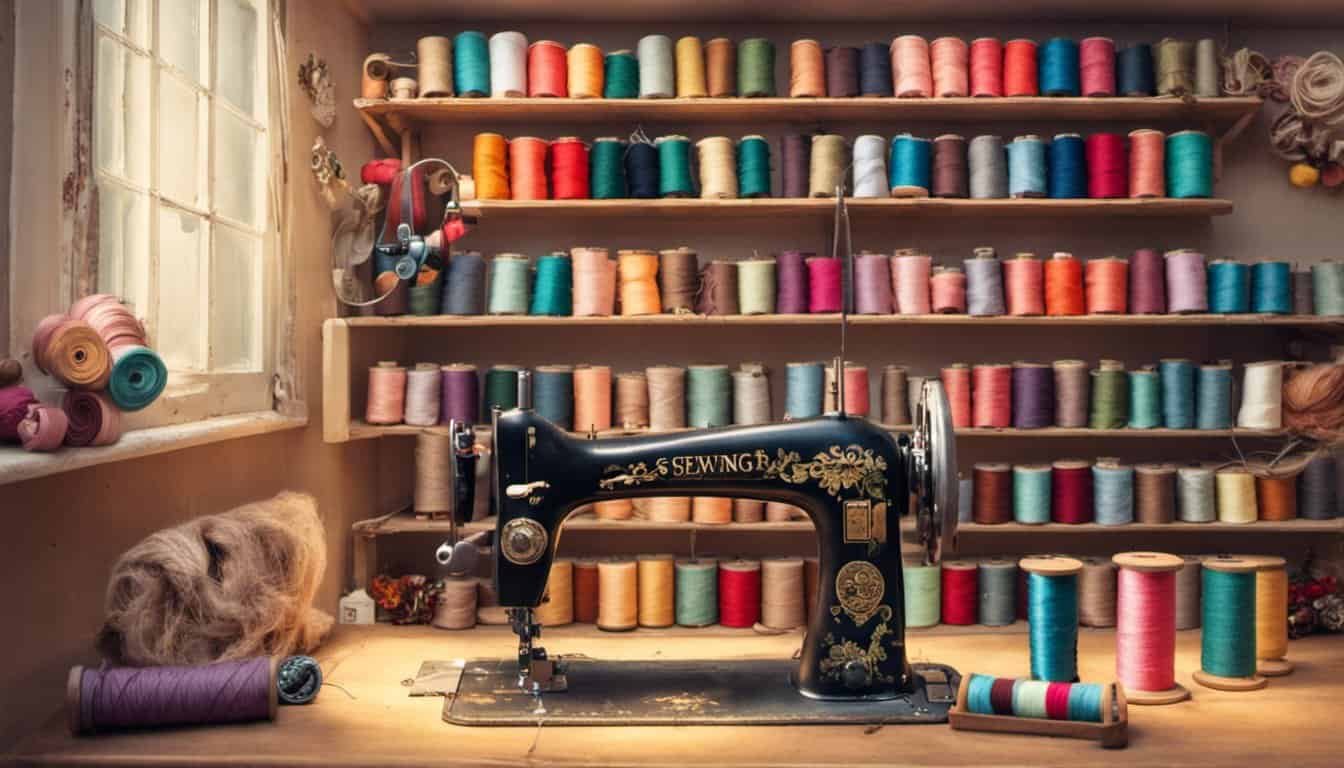
On the other hand, sewing thread is more about function than flair. It’s thinner than embroidery thread and often crafted from cotton or polyester. You’ll find this workhorse in most sewing kits because it’s designed to hold things together discreetly.
Here’s a quick rundown:
- Embroidery Thread: Thick & shiny – perfect for making a statement
- Sewing Thread: Thin & subtle – ideal for binding fabric pieces together
You might wonder if you can use one in place of the other. Here’s the deal: while you can embroider with sewing thread, it may not give you the desired effect due to its thinness and lack of sheen. Conversely, using embroidery thread for regular stitching might result in bulky seams because of its thickness.
Now that we’ve cleared up these differences let’s keep threading our way through this fascinating world!
Case Study: Experiences with Sewing Thread in Embroidery
Diving right into it, let’s talk about Jane. She’s a seasoned embroiderer who decided to experiment with sewing thread on her latest project. You might be thinking, “Isn’t that unusual?” Well, yes and no. While it’s not the norm, using sewing thread isn’t unheard of!

Jane’s project was a delicate floral design on fine linen. With embroidery threads being typically thicker and more textured than regular sewing thread, she feared they’d overpower the fabric and design. So she turned to her trusty spools of cotton-polyester blend sewing thread.
You might wonder how it went? Let me tell you – surprisingly well! The finer texture of the sewing thread allowed for more subtle shading and detailing in her floral pattern. It also blended beautifully with the fine linen fabric.
But not everything was rosy though (pun intended!). There were some challenges too:
- First off, threading the needle proved to be trickier as sewing threads are thinner.
- Next up – tension issues! Sewing threads don’t have the same tension as embroidery threads do which meant Jane had to keep readjusting.
- Lastly, durability could potentially be an issue down the line as embroidery threads tend to be stronger.
So while there were some advantages like beautiful blending and enhanced detail work; there were also drawbacks such as threading difficulties and potential long-term durability concerns.
Are you curious about numbers? Here’s a quick comparison table for you:

| Factor | Embroidery Thread | Sewing Thread |
|---|---|---|
| Thickness | Thicker | Thinner |
| Texture | More Textured | Less Textured |
| Durability | Stronger | Potentially weaker |
This case study illuminates that while unconventional, using sewing thread for embroidery can yield unique results! However it does come with its own set of challenges. Are you up for the task? Remember, it’s all about trial and error. So go ahead, challenge norms and create your own unique embroidery story! Just like Jane did.
Tips to Successfully Use Sewing Thread for Embroidering
Dipping your toes into the colorful world of embroidery, huh? Don’t fret if you’re short on embroidery thread. You can absolutely get creative with sewing thread! Here’s how to make it work.
First off, it’s essential to remember that sewing threads are generally thinner than embroidery ones. But hey, no worries! All you need to do is double or triple up your strands. Experiment a little and find out what works best for you. The beauty of DIY is in this trial and error process, right?
Now let’s talk materials. Cotton sewing threads are a popular choice among DIY enthusiasts, mainly because they’re readily available and easy on the pocketbook too. They’ve got a matte finish that gives your finished work that classic hand-sewn look.
Ever heard of rayon? This type of sewing thread will give your piece a shiny finish similar to silk thread – perfect if you’re aiming for an elegant touch!

If durability is what you’re after though, polyester sewing threads might just be your new best friend. These guys are known for their strength and colorfastness – ideal when creating pieces meant to last.
Before we wrap up this section, here’s one crucial tidbit: understand the importance of tension when using sewing thread for embroidery. Too tight and you’ll end up puckering the fabric; too loose and, well…you get the drift!
Keep these tips in mind as you embark on your embroidery journey with trusty ol’ sewing thread—it may just surprise you with its versatility!
Conclusion: Final Thoughts on Using Sewing Thread in Embroidery
Let’s wrap this up, shall we? You’ve been pondering over one question – can you embroider with sewing thread? It’s no secret that embroidery is a beautiful art form, and the type of thread you use can truly enhance your work.
So here it is – yes, you certainly can use sewing thread for embroidery! But remember, it’s not just about managing to stitch with it. It’s also about how the final product turns out. The beauty of an embroidered piece largely depends on its shine and thickness which differentiates it from regular sewing.
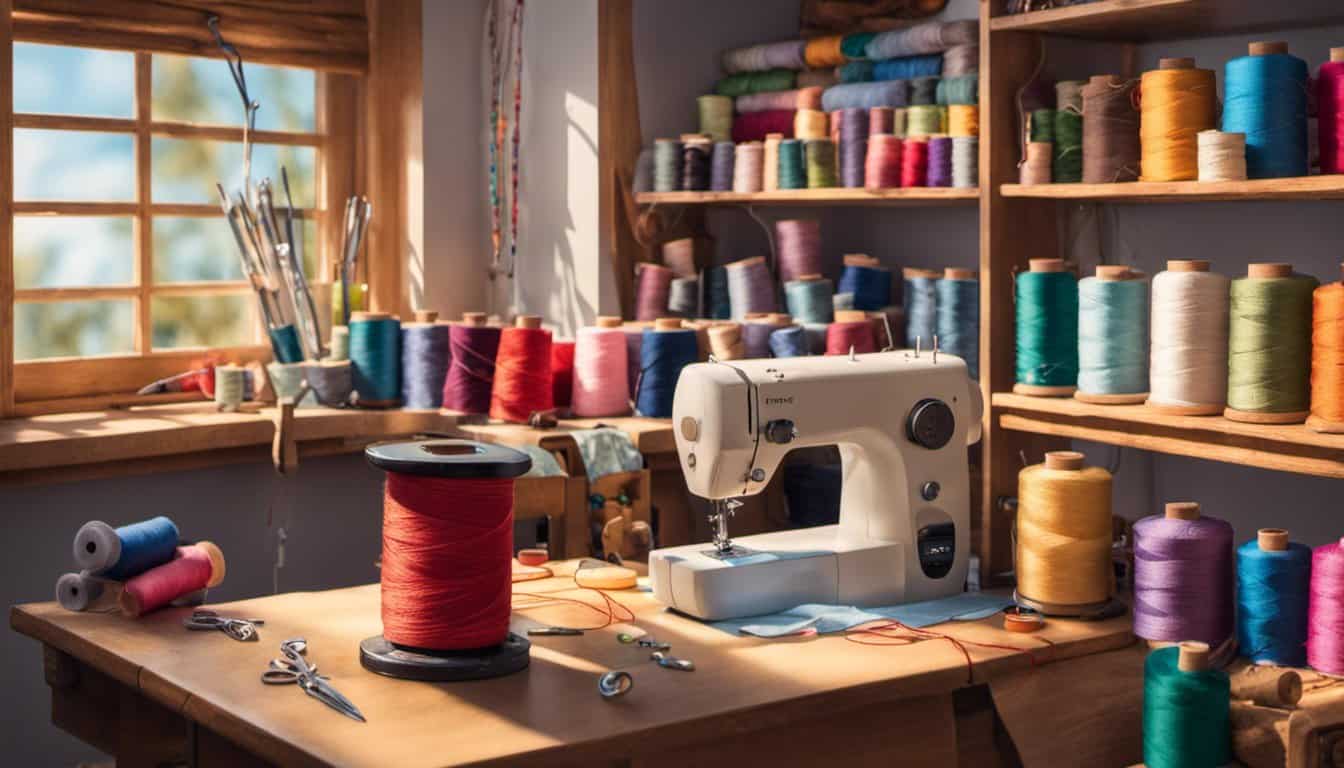
Here are some key takeaways from our discussion:
- Sewing threads are thinner than embroidery threads.
- They may not give the same shiny effect as specialized embroidery threads.
- When using sewing threads, be prepared for a more subtle look in your end product.
However, don’t let these points discourage you! If subtlety is what you’re aiming for or if you simply love experimenting with materials at hand, go ahead and try out sewing thread in your next project!
Craftsmanship lies in both skill and creativity. So why limit yourself? With a bit of practice and patience, using sewing thread could open up new avenues for your embroidery work.
Lastly, keep this reminder close to heart: Whether you choose to use typical embroidery threads or venture out with sewing ones—your craft should ultimately reflect who you are. It’s all about personal style and preference after all!
So there we have it! Now pick up those needles and start creating magic with whatever kind of thread makes your heart sing.


